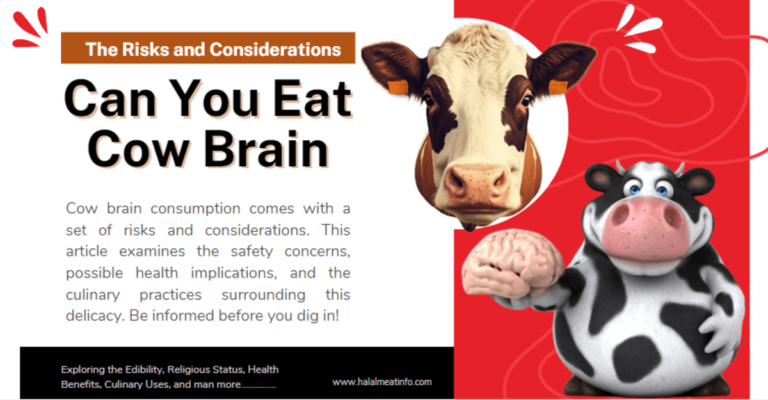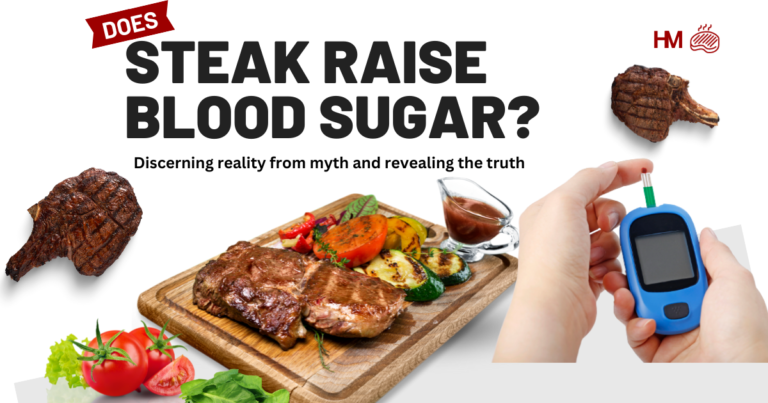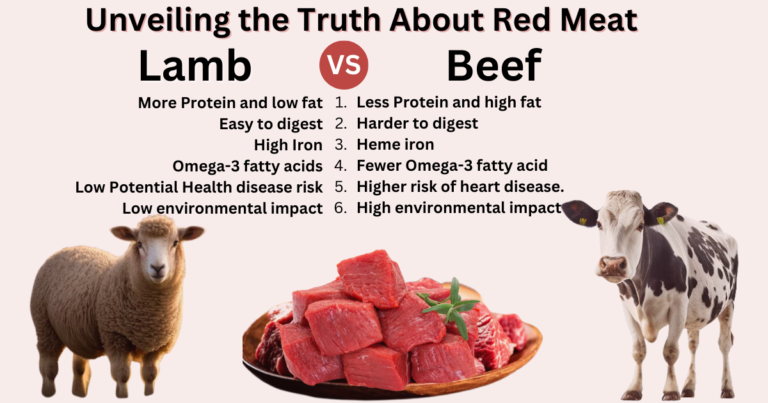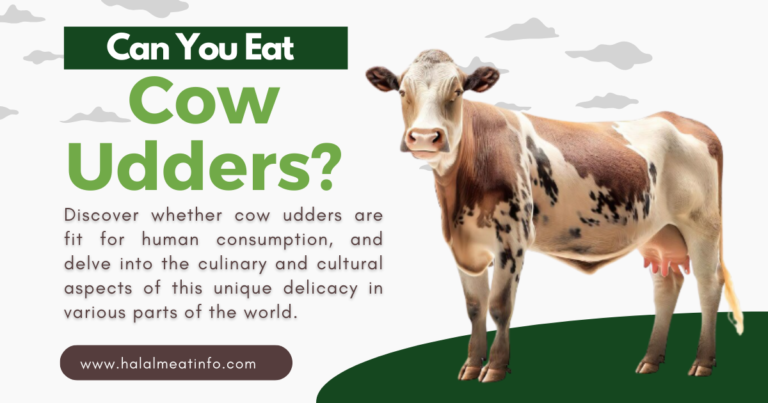What is Beef Pizzle? Top 10 Facts You Need to Know
Beef Pizzle may sound like an exotic ingredient found in upscale restaurants, but you might be surprised to learn that it’s a popular dog chew treat! If you’re a pet parent seeking a nutritious, long-lasting chew for your furry friend or a culinary adventurer keen to explore the diverse world of offal, read on. This blog post delves into the intriguing subject of Beef Pizzle – what it is, its origins, and what makes it such a sought-after item in different circles. Whether you’re coming from a pet nutrition angle or a culinary perspective, we promise this will be a fascinating read.

Defining Beef Pizzle
The term “pizzle” originates from the Middle English (German word “pesel”) that denotes tough fibrous tissue connecting muscle to bone, known biologically as a tendon or ligament. In contemporary language, it specifically refers to the penis of an animal, notably a bull. Beef Pizzle, also known as Bull Pizzle, is essentially the dried and stretched penis of a bull. Despite its somewhat off-putting definition to some, Beef Pizzle has earned a spot in various traditions and industries. In the past, it was even depicted in French heraldry and employed as an insult in Shakespearean literature.
In the pet industry, it’s prized as a nutritious, fully digestible chew treat that’s high in protein and low in fat. Initially, beef pizzle was processed into glue for commercial purposes, but its application expanded over time, eventually gaining popularity as a chew stick for dogs. On the other hand, culinary enthusiasts appreciate its unique flavor and texture when properly prepared. So, whether you’re considering it as a treat for your pet or an ingredient in your next meal, Beef Pizzle is a versatile byproduct that goes beyond its unusual origin.
Historical Usage of Beef Pizzle
The use of Beef Pizzle dates back to ancient times and spans multiple cultures. In historical Europe, pizzle was used in concoctions believed to have therapeutic effects, particularly regarding sexual potency and fertility, due to its origin from the bull, an animal symbolizing strength and virility. In Traditional Chinese Medicine, pizzle was deemed a tonic that bolstered kidney function and treated ailments like back pain. It was also used in making walking canes and whip handles, admired for its strength when dried. Interestingly, pizzles were used in the sport of pizzle tossing, a game of the Scottish Highland Games. This varied historical usage of Beef Pizzle emphasizes its versatile nature, deeply woven into the fabric of different traditions and practices.
Beef Pizzle in Different Religions
Islam
In Islam, consuming male & female organs (including beef pizzle) is not permissible (non-Halal) as long as the bull has been slaughtered according to Islamic rites.
Christianity
Within the realms of Christianity, Beef Pizzle does not have a direct religious connotation. However, its use in culinary practices varies. Certain sects, particularly in Europe, have historically included it in their cuisine. Nevertheless, it’s crucial to acknowledge that this is primarily a cultural tradition rather than a religious one.
Hinduism
In Hinduism, the cow is considered sacred, and its slaughter is generally prohibited, thereby making Beef Pizzle consumption unacceptable. This respect for the cow and its derivatives is firmly rooted in Hindu culture and religious traditions.
Judaism
In Judaism, dietary laws (Kosher) are strict and specific. While Beef Pizzle is not explicitly mentioned in the Torah, it could not be considered kosher if derived from an animal slaughtered according to Jewish dietary laws.
Buddhism
Buddhism encourages vegetarianism as a means of respecting all sentient life. Therefore, the consumption of Beef Pizzle, like other meat products, is generally discouraged, although not strictly forbidden.
Each religion, with its unique doctrines and cultural practices, views the use of Beef Pizzle differently. This diversity further highlights the complex and varied roles this byproduct plays in human societies worldwide.
Nutritional Value of Beef Pizzle
Beef Pizzle boasts an impressive nutritional profile, making it a valuable food source and a potent pet chew treat. This derivative contains abundant protein, supplying vital amino acids crucial for muscle growth and diverse bodily processes. Furthermore, it boasts low fat content, contributing to its healthier profile in comparison to other meat components. Beef Pizzle is also a source of vital minerals, including calcium and magnesium [3], contributing to bone health. Furthermore, it is rich in collagen, a protein that promotes healthy joints, skin, and hair.
However, as with all foods, it is recommended to consume Beef Pizzle in moderation as part of a balanced diet or use it as a treat for pets. The nutritional value of Beef Pizzle can vary depending on the cooking method used, with boiling or steaming considered to retain the most nutrients. As always, if you are considering Beef Pizzle for your pet, it is best to consult a veterinary nutritionist to ensure it fits their overall dietary needs.
You Might Like Best meat to eat for weight loss
Controversies Surrounding Beef Pizzle
Ethical Considerations
In the realm of ethical considerations, questions about animal welfare and harvesting practices are raised frequently. The living conditions of the bulls, their treatment, and the process of pizzle extraction have all been subjects of scrutiny. Animal rights activists often argue that the demand for beef pizzle may inadvertently encourage inhumane farming practices, thus raising ethical dilemmas for potential consumers.
Health and Safety Concerns
On the other hand, health and safety concerns related to beef pizzle primarily revolve around its preparation and consumption. Despite the traditional belief in its health benefits, there needs to be more rigorous scientific studies confirming these claims. Furthermore, improper preparation methods can lead to bacterial contamination, posing a food safety risk. Also , due to their use in livestock rearing, the possible presence of hormones or pharmaceutical residues in the pizzle is another potential risk to human health that can’t be ignored.
Beef Pizzle in Traditional Medicine
Traditional medicine systems around the world, particularly in Asia, have valued Beef Pizzle for its purported health and wellness benefits [10]. These beliefs, combined with the nutritional profile of Beef Pizzle, have led to its incorporation into various medicinal and therapeutic applications.
Tonic Soups and Stews
In Traditional Chinese Medicine (TCM), Beef Pizzle is often used in the creation of tonic soups and stews. These dishes are believed to strengthen the body, boost vitality, and improve overall health. The high protein and collagen content of Beef Pizzle is thought to contribute to these benefits.[1], [5]
Male Vitality Supplement
In some cultures, Beef Pizzle is considered a natural supplement for male vitality. This belief stems from the organ’s symbolism, as well as an old association with strength and vigour [2]. Some preliminary studies have suggested potential benefits, but further research is needed to conclusively establish these effects.
Joint Health and Skin Care
Given its rich collagen content, Beef Pizzle is sometimes used in the treatment of joint health conditions, like osteoarthritis, in TCM. Similarly, it is believed to promote skin health, enhancing its elasticity and reducing signs of ageing [4].
Even though these traditional applications exist, seeking advice from a healthcare professional before incorporating Beef Pizzle into any medical or wellness regimen is essential. While generally safe for most people, individual health conditions and dietary restrictions should always be considered.
Beef Pizzle as a Pet Treat
Health Benefits for Pets
Beef Pizzle can offer some health benefits to pets, especially dogs. The high protein content is beneficial to canine muscle development and energy levels. Moreover, chewing on Beef Pizzle can support dental health by helping to keep their teeth clean and gums healthy. [6]
Allergy and Intolerance
Before introducing Beef Pizzle as a treat for pets, it’s important to monitor them closely for signs of allergy or intolerance. Some dogs might experience mild to severe reactions like upset stomach or skin reactions. If any adverse reactions are observed, stop giving it immediately and consult a veterinarian.
Chew Treat Safety
While Beef Pizzle can be a great chew treat for dogs [7], pet owners need to ensure the treat’s safety. Chewing on hard treats can sometimes lead to tooth fractures or choking hazards. Always supervise your pet while it’s enjoying a Beef Pizzle treat.
Sourcing and Preparation
The source of Beef Pizzle is important when considering it as a pet treat. The product should be obtained from a reputable source and prepared properly to eliminate any harmful bacteria. Always make sure to cook it thoroughly before offering it to your pet.
Moderation is Key
Like any other treat, Beef Pizzle should be given to pets in moderation. Consuming an excessive quantity could result in weight gain or nutritional imbalances. Always consider treats as part of your pet’s total daily food intake to ensure a well-rounded diet [8].
Culinary Uses of Beef Pizzle
Beef Pizzle isn’t just for pets – it also has a place in human cuisine. This intriguing ingredient is used in various dishes worldwide, each preparation method bringing out a different aspect of its unique flavor and texture.
In Asian Cuisine
In many Asian countries, particularly China and Korea, Beef Pizzle is considered a delicacy. It is often used in soups and stews, providing a rich flavor. In China, it is commonly stewed with herbs and served as a tonic soup, which is believed to boost health and vitality. [9]
European Dishes
While not as common in European cooking today, Beef Pizzle has been used in traditional dishes, especially in countries like Italy. It can be braised, stewed, or even ground and incorporated into sausages.
Grilled or Roasted
Grilling or roasting Beef Pizzle can bring out its robust flavor. It is typically cut into small pieces, marinated, and then grilled or roasted to perfection. The result is a chewy, flavorful treat that can be enjoyed as an appetizer or snack.
As a Stock Base
Due to its rich flavor, Beef Pizzle is often used to make a hearty and nutritious base for broths and stocks. This can then be used as a foundation for soups, stews, and sauces, enhancing the overall depth and complexity of the dish.
No matter how it’s prepared, Beef Pizzle offers a unique culinary experience. Its distinctive taste and texture and rich nutritional profile make it a noteworthy addition to any adventurous cook’s repertoire.
Health Benefits and Risks of Consuming Beef Pizzle
Beef Pizzle, while not a conventional food item in many cultures, presents a range of potential health benefits and a few risks. It’s essential to understand these aspects thoroughly, making sure to consult your healthcare provider or a nutritionist before incorporating it into your diet or serving it as a treat for your pets.
Health Benefits
There are several reasons why Beef’s Pizzle might be beneficial for health. The high protein content, low fat, rich vitamins, and collagen content could all contribute to the nutritional value of your diet.
- Protein Intake: As mentioned earlier, Beef Pizzle is a rich source of protein [11], essential for tissue repair, hormone production, and overall body growth and development.
- Low Fat: Beef Pizzle is low in fat [12], making it a suitable choice for those managing weight or adhering to a lean diet.
- Rich in Vitamins: Beef Pizzle provides essential vitamins like B12, necessary for nerve function and production of red blood cells.
- Collagen Content: Consuming collagen-rich foods like Beef Pizzle could potentially improve skin elasticity and joint health.
Health Risks
It is generally safe when consumed in moderation, there are a few potential risks to be aware of:
- Allergic Reactions: Certain people might have an allergy to Beef Pizzle. Symptoms of an allergic reaction can range from mild, like hives, to severe, like anaphylaxis [13].
- Dietary Restrictions: For those following specific dietary rules due to religious, ethical, or personal reasons, the consumption of Beef Pizzle may not be acceptable.
- Contamination: Poorly handled Beef Pizzle can become contaminated with bacteria and parasites, so it’s important to make sure it is sourced from a reliable supplier [14].
- Individuals who have experienced consuming bull penis caution against trying it and suggest that others should refrain from eating it. [15]
Cooking Tips and Techniques
Choosing the Right Cut
When it comes to cooking it, the selection of the right cut is paramount. Choose a piece that’s fresh and clean, with a pleasant smell. It should be a dark reddish color, indicating its freshness.
Preparing for Cooking
Pizzle requires some preparation before it can be used in cooking. It’s typically soaked in cold water for several hours or overnight to remove any residual blood and impurities. The outer membrane should also be carefully removed before cooking.
Cooking Techniques
Different cooking techniques can bring out different flavors and textures from the Beef Pizzle. Slow-cooking methods, like stewing or braising, are often preferred as they can soften the tough texture and bring out its rich flavor.
Pairing with Ingredients
Beef Pizzle pairs well with strong flavors and aromatic herbs. In Asian cuisine, it’s often cooked with Chinese herbs, spices, and mushrooms. In other culinary traditions, it might be paired with hearty vegetables, red wine, or robust sauces.
Storing and Handling
Proper storage is crucial to maintain the freshness and quality of Beef Pizzle. It’s advisable to store it in a cool environment and utilize it within a few days of acquisition. If you’re not going to use it immediately, consider freezing it.
Alternatives to Beef Pizzle
While Beef Pizzle can be an interesting addition to your pet’s diet or culinary repertoire, there are other options worth considering if you’re seeking alternatives. For dog owners, bully sticks or tendons from other animals could be a good substitute, providing the same gnawing satisfaction and nutritional benefits. When it comes to culinary uses, other offal such as tripe, liver, or kidney might offer a similar gastronomic adventure. These organ meats share the rich flavor and unique texture inherent to offal and are frequently used in various cuisines worldwide. So, whether you’re exploring healthy chew options for your canine companion or delving into the rich world of offal cuisine, a range of alternatives to Beef Pizzle are readily available.
FAQs
No, according to Islam law reproductive organs of male and female are not permissible.
The safety of consuming beef pizzle depends on proper sourcing, handling, and preparation. Ensure it comes from reputable suppliers and is cooked thoroughly.
In various cultures, beef pizzle is commonly used in soups, stews, stir-fries, and even jerky.
While historically believed to have aphrodisiac properties, modern science has not definitively proven this claim.
Yes, some cultures may view the consumption of beef pizzle as taboo due to religious or cultural beliefs.
Conclusion
With its rich nutritional profile and traditional medicinal uses, Beef Pizzle has found its way into the culinary world and pet care sector. While it’s revered for its potential health benefits, it’s also important to remember that individual tolerances and preferences can differ, making it unsuitable for some. For those who wish to incorporate Beef’s Pizzle into their diet, careful sourcing, preparation, and cooking are key to maximizing its benefits and ensuring safety. If considering it as a pet treat, moderation and careful monitoring are crucial to maintaining your pet’s health and well-being. Always remember, when it comes to trying new foods or introducing new treats to your pets, consultation with a healthcare provider or veterinarian is always a wise step.






